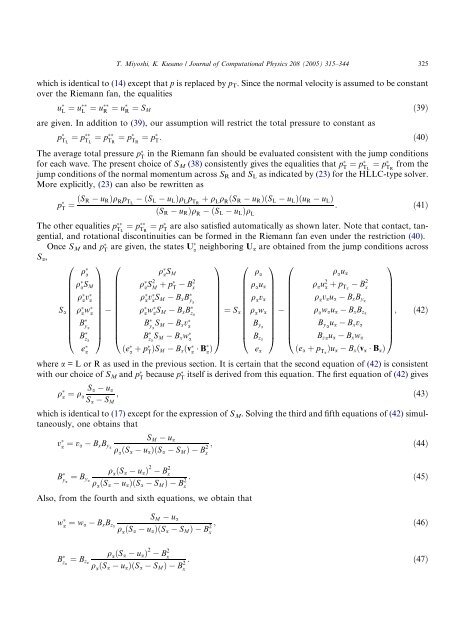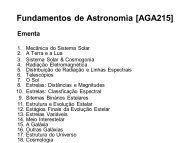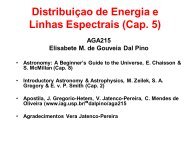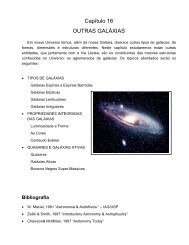A multi-state HLL approximate Riemann solver for ideal ...
A multi-state HLL approximate Riemann solver for ideal ...
A multi-state HLL approximate Riemann solver for ideal ...
You also want an ePaper? Increase the reach of your titles
YUMPU automatically turns print PDFs into web optimized ePapers that Google loves.
which is identical to (14) except that p is replaced by p T . Since the normal velocity is assumed to be constantover the <strong>Riemann</strong> fan, the equalitiesu L ¼ u L¼ u R ¼ u R ¼ S Mð39Þare given. In addition to (39), our assumption will restrict the total pressure to constant asp T L¼ p T L¼ p T R¼ p T R¼ p T : ð40ÞThe average total pressure p Tin the <strong>Riemann</strong> fan should be evaluated consistent with the jump conditions<strong>for</strong> each wave. The present choice of S M (38) consistently gives the equalities that p T ¼ p T L¼ p T Rfrom thejump conditions of the normal momentum across S R and S L as indicated by (23) <strong>for</strong> the <strong>HLL</strong>C-type <strong>solver</strong>.More explicitly, (23) can also be rewritten asp T ¼ ðS R u R Þq R p TLðS L u L Þq L p TRþ q L q R ðS R u R ÞðS L u L Þðu R u L Þ: ð41ÞðS R u R Þq R ðS L u L Þq LThe other equalities p T L¼ p T R¼ p Tare also satisfied automatically as shown later. Note that contact, tangential,and rotational discontinuities can be <strong>for</strong>med in the <strong>Riemann</strong> fan even under the restriction (40).Once S M and p T are given, the <strong>state</strong>s U a neighboring U a are obtained from the jump conditions acrossS a ,0 1 0q aq a S 1 0 1 01Mq aq a u aq a S Mq a S2 M þ p TB 2 xq q a v aq a S aq v a S a u aq a u 2 a þ p T aB 2 xM B x B y aq a v aq a v a u a B x B yaa w aq a w a S M B x B z a¼ S aq a w aq a w a u a B x B za; ð42ÞB y aB y aS M B x v aB yaB y au a B x v aB@ B C Bz aA @ B z aS M B x w C B C BCa A @ B za A @ B za u a B x w a Aðe a þ p T ÞS M B x ðv a B a Þðe a þ p TaÞu a B x ðv a B a Þe awhere a = L or R as used in the previous section. It is certain that the second equation of (42) is consistentwith our choice of S M and p T because p Titself is derived from this equation. The first equation of (42) givesS au aT. Miyoshi, K. Kusano / Journal of Computational Physics 208 (2005) 315–344 325q a ¼ q a ; ð43ÞS a S Mwhich is identical to (17) except <strong>for</strong> the expression of S M . Solving the third and fifth equations of (42) simultaneously,one obtains thatv a ¼ v S M u aa B x B ya ; ð44Þq a ðS a u a ÞðS a S M Þ B 2 xe aB qy a¼ B a ðS a u a Þ 2 B 2 xya : ð45Þq a ðS a u a ÞðS a S M Þ B 2 xAlso, from the fourth and sixth equations, we obtain thatw a ¼ w S M u aa B x B za ; ð46Þq a ðS a u a ÞðS a S M Þ B 2 xB qz a¼ B a ðS a u a Þ 2 B 2 xza : ð47Þq a ðS a u a ÞðS a S M Þ B 2 x







